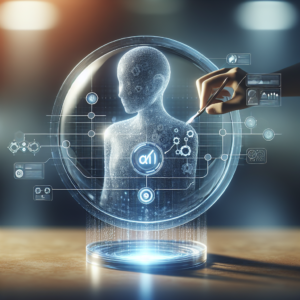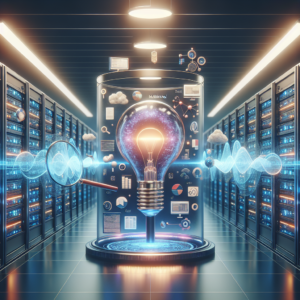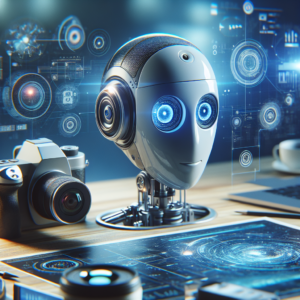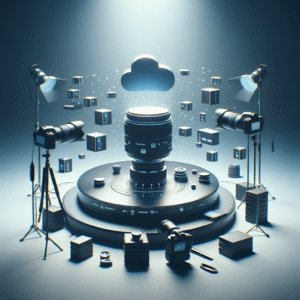What do you think the future holds for mixed reality technology? It’s fascinating to imagine how this blend of physical and digital worlds could evolve and impact our lives. As I contemplate the advancements in mixed reality, I find myself excited about the possibilities.
Understanding Mixed Reality
Mixed reality (MR) is an exciting intersection of virtual reality (VR) and augmented reality (AR). It allows users to engage with digital content while remaining in their physical surroundings. Unlike VR, which immerses users in a completely virtual environment, MR overlays digital elements onto the real world, creating a seamless interaction between both realms.
This technology has developed significantly over the past few years, paving the way for applications in various sectors, including entertainment, education, health care, and business. The evolution of high-performance hardware and sophisticated software has made MR more accessible and user-friendly.
The Key Components of Mixed Reality
To truly understand mixed reality, it helps to look at its key components. I often think about how these elements work together to create immersive experiences.
| Component | Description |
|---|---|
| Sensors | Devices that detect the user’s environment and movements. |
| Displays | Screens or headsets that project mixed reality visuals. |
| Processing Units | Powerful chips that handle complex calculations while maintaining real-time performance. |
| Software | Programs that integrate physical and digital elements seamlessly. |
Each of these components plays a crucial role in creating an immersive mixed reality experience.
The Current State of Mixed Reality Technology
Currently, mixed reality is transforming various industries. I have been particularly intrigued by how businesses and educational institutions are adopting MR to create innovative solutions.
Industries Embracing Mixed Reality
Several sectors are finding unique ways to incorporate mixed reality technology into their practices.
-
Healthcare: Medical professionals are using MR for surgical simulations, which help them practice complex procedures before operating on real patients. This increases confidence and enhances patient safety.
-
Education: Schools and universities are leveraging MR to create engaging learning environments. Imagine studying anatomy by virtually dissecting a 3D model or exploring historical landmarks from your classroom!
-
Manufacturing: Companies are using MR for training and assembly line enhancements. I find it impressive to think about workers having access to real-time instructions overlaid on their workstations.
-
Entertainment: The gaming industry is experiencing a resurgence due to mixed reality. Games like Pokémon Go introduced the world to how fun and engaging augmented elements can be when combined with the real world.
The potential applications seem endless.
Breaking Down the Benefits of Mixed Reality
By combining the real and digital worlds, MR offers a wealth of benefits. I see how these advantages can pave the way for a more integrated approach to various tasks.
| Benefit | Explanation |
|---|---|
| Enhanced Learning | Interactive experiences foster deeper understanding and retention for learners. |
| Improved Collaboration | Teams can collaborate more effectively when they can visualize concepts together. |
| Increased Safety | In fields like healthcare and manufacturing, simulation training can reduce risks. |
| Accessibility | Mixed reality allows individuals with disabilities to experience environments in new ways. |
I find it particularly interesting how MR can cater to a range of learning styles, making education more inclusive.
The Future Trends in Mixed Reality
Looking forward, certain trends appear to be shaping the future of mixed reality technology. I often think about how these developments could impact our everyday lives.
Advancements in Hardware
As technology progresses, I am hopeful that hardware will become even more compact and powerful. The trend is shifting towards lightweight headsets and glasses with enhanced capabilities. Imagine wearing glasses that seamlessly adjust the digital elements based on what you’re looking at!
Software Innovation
The software backing mixed reality experiences is also evolving rapidly. Increased compatibility across various devices will allow for a more cohesive experience. I foresee a future where developers can easily create cross-platform applications, reaching a larger audience.
Integration with Artificial Intelligence
Artificial intelligence (AI) will play a pivotal role in the development of mixed reality. AI’s ability to analyze data and provide personalized experiences will enhance interactivity. I find it fascinating to think about how MR could adapt in real-time to my preferences or surroundings.
Overcoming Challenges in Mixed Reality
While the future of mixed reality technology appears promising, several challenges need to be addressed. I feel it’s essential to remain mindful of these obstacles to ensure the technology’s success.
Technical Limitations
One of the primary challenges is the technical limitations currently present in MR devices. Many consumers still deal with high costs, limited battery life, and performance issues. Until manufacturers can overcome these hurdles, widespread adoption may take time.
Privacy Concerns
As with any substantial technological shift, privacy and security are major concerns. The integration of MR into daily life means more data collection, which could lead to misuse. I find it crucial for developers and companies to prioritize strong privacy policies and practices.
User Experience
Creating an engaging and intuitive user experience remains a challenge. While MR has made strides, ensuring that applications are user-friendly can significantly affect adoption rates. I believe that improving user interfaces will lead to more enjoyable experiences for everyone.
Exciting Applications on the Horizon
As I look ahead, I’m excited about the promising applications that mixed reality will continue to unveil. Various sectors are bound to benefit from innovative ideas stemming from this technology.
Mixed Reality Shopping
Imagine going shopping without leaving your home. Mixed reality could allow me to try on virtual clothes or see how furniture looks in my living room through my smartphone or headset. Retailers are already experimenting with these ideas, and I can’t wait to see how they unfold.
Real-Time Language Translation
With MR, I wonder if real-time language translation could be integrated into travel experiences. I could wear smart glasses that translate foreign signs or conversations, making it easier to communicate while traveling. This would level the playing field for travelers and enhance cultural experiences.
Enhanced Tourism Experiences
Tourism could also benefit significantly from mixed reality. I dream of visiting historical sites and being able to see historical moments played out in front of me. Visiting museums could transform into a whole new adventure as digital guides share immersive stories about exhibits in real time.
Training and Development
Training programs globally are set to undergo a revolution due to mixed reality applications. I can already see new employees using MR to experience real-world scenarios in a risk-free environment, improving their confidence and competence.
How to Get Involved with Mixed Reality
For those interested in mixed reality technology, there are numerous ways to get involved. I think it’s important to stay informed and perhaps even engage with this innovative field.
Stay Educated
One of the best ways to start is to educate myself on the subject. There are plenty of online courses, workshops, and resources available. Subscribing to industry newsletters or following influencers in mixed reality can also keep me updated on the latest trends and developments.
Experiment with MR Tools
Many companies are offering MR applications suitable for everyday use. I find it beneficial to download these experiences and engage with them personally. As I explore, I can better understand what excites me and where I see potential improvements.
Join Online Communities
Engaging with online communities, such as forums or social media groups, is another way of immersing myself in the mixed reality space. These forums provide a platform to share ideas, ask questions, and discover opportunities within the industry.
Create Content
For those with a creative streak, developing content for mixed reality applications can be a rewarding path. Whether it’s designing virtual environments or creating educational experiences, there are plenty of opportunities to express creativity through MR.
The Role of Collaboration in Mixed Reality
Collaboration will be critical as mixed reality continues to evolve. I feel strongly that industry professionals, researchers, and developers should work together to shape best practices and ensure the responsible development of this technology.
Industry Partnerships
Collaborations between companies can lead to innovative solutions that benefit both consumers and businesses. I envision industry partnerships focusing on shared research and development efforts that accelerate advancements in mixed reality technology.
Academic Research
I believe universities and research institutions play a significant role in studying mixed reality’s impact on society. Their findings can provide valuable insights that inform the development and application of MR technologies for different industries.
User Input and Feedback
Engaging with users directly can inform how mixed reality tools are designed. I see the value in user feedback for shaping the functionality and user experience of MR applications. The more developers listen to consumers, the more effective and enjoyable the technology will become.
Conclusion: A Bright Future for Mixed Reality
As I reflect on the future of mixed reality technology, I am filled with optimism about the opportunities it holds. The potential applications are vast, and I look forward to witnessing how this technology transforms our lives. With continued advancements, collaboration, and a focus on user needs, mixed reality can redefine how we interact with the world around us.
Whether it’s in education, entertainment, or healthcare, the integration of physical and digital experiences promises to enhance our ways of living and working. I can’t wait to see where this journey takes us!






